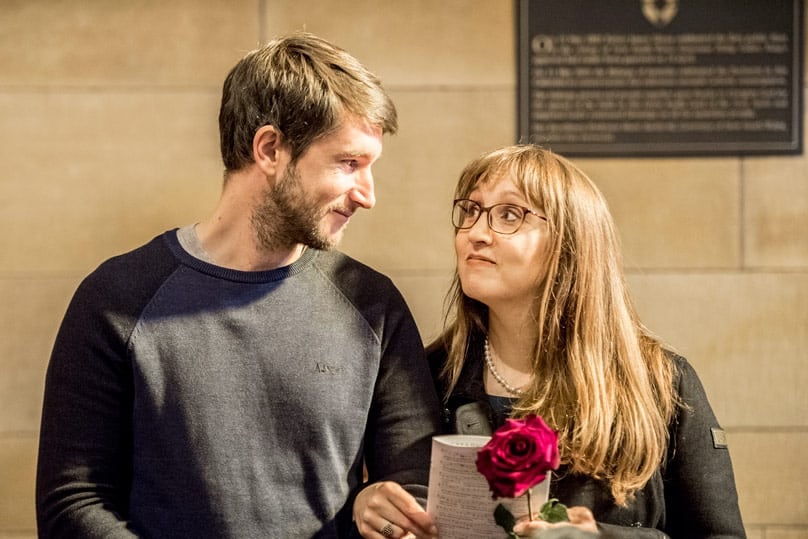
Many married couples think that their sexual intimacy is completely separate from their spiritual life.
In fact, it is not uncommon to hear couples talk as though these two aspects of their lives are in opposition to each other—that their lovemaking is “permitted” but somehow compromises their path to holiness.
This common view is not what the church teaches. Rather, the church holds that the sexual communion of husband and wife is sacramental and sacred.
We remember when we first came across this idea in the writings of St John Paul II. It seemed almost sacrilegious to think about our lovemaking as a holy act.
Yet, intuitively, we also knew it to be true. Something deeply spiritual was happening in this aspect of our married life.
Holiness is often equated with devotional practices, ritual prayers and pious gestures like genuflection.
However, holiness is more about our relationship with God, how close and intimate we are, how much we trust God and surrender to him.
The external gestures and prayers in or themselves don’t “make us holy.” It is the depth of our intimacy with God that is a far more accurate measure.
It explains why some of our most popular saints described themselves as dreadful sinners.
They knew that they were totally dependent on God for everything of goodness in them and trusted him to lead their life.
At the end of the day, holiness, and ultimately sainthood, is about relationship.
Which is what makes couple saints so interesting. Their holiness—that is, their intimacy with God—is lived in and through their intimacy with each other.

In the sacrament of matrimony, our path to holiness—our intimacy with God—is inseparable from our relationship with each other; and that most definitely includes our sexual intimacy.
Although they are not mentioned in the scriptures, Joachim and Anne (feast day 26 July) are revered in both Eastern and Western churches.
Tradition holds that they were elderly and childless when an angel visited and promised them a child. That child would be Mary, the mother of Jesus.
The church teaches that Mary was conceived without sin as a special grace from God. While Jesus was conceived by a supernatural act of the Holy Spirit, Mary was conceived through her parents very human lovemaking.
This has led scholars to speculate that the holiness of Joachim and Anne was such that they were able to approach the marital embrace with a perfect purity of heart.
Shielded from “contamination” by her parents’ sin, Mary was conceived without original sin, and she is aptly known as the “Immaculate Conception.”
Priscilla and Aquila (feast day 8 July) lived and worked closely with the apostle Paul in Corinth and later in Ephesus. The scriptures tell us that, like Paul, they were tentmakers and that he lived in their home.
No doubt during their time together they had many discussions that influenced Paul’s writings on marriage and family life.
For example, in his letter to the Ephesians, he boldly correlated the one flesh union of husband and wife to Christ’s love for the Church, declaring it “a great mystery.” (Eph 5:21-33).
This teaching from Paul, and others, became foundational to the development of the theology of marriage and sexual love. It features regularly in the documents of the church and in the writings of St John Paul II particularly.
Neither of these couple-saints have any recorded writings or sayings, yet they profoundly influenced the church’s theology of marital love. Their stories and example point to an important reality: our lovemaking is deeply relevant to our growth in holiness.
